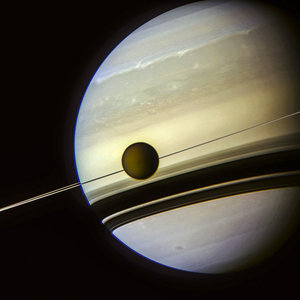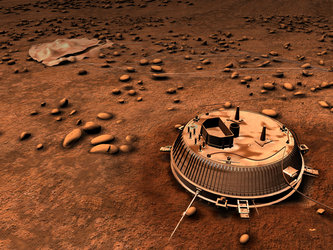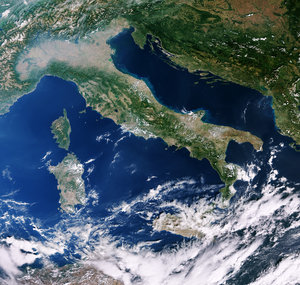Surface composition of Iapetus
This colour composite image of Saturn's moon Iapetus from NASA/ESA/ASI Cassini spacecraft was obtained on 31 December 2004, an hour and a half before the New Year.
It was taken with Cassini's Visual and Infrared Mapping Spectrometer (VIMS) at a distance of 121 000 kilometres, with a spatial resolution of about 60 kilometres.
The three colours used in the mosaic correspond to 1.01, 3.21, and 3.80 microns. The different colours represent vastly different surface compositions. The upper bright blue region is rich in water ice, while the lower, dark brown region is composed mainly of a substance rich in organic material.
The yellow region consists of a mixture of ice and organics, suggesting a gradual change in composition on the surface. This pattern suggests Iapetus swept up the dark material, which may have come from debris created from meteoritic impacts onto the small, outer satellites of Saturn.
The Cassini-Huygens mission is a co-operative project of NASA, ESA and ASI, the Italian space agency.
Credit: NASA/JPL/University of Arizona















 Germany
Germany
 Austria
Austria
 Belgium
Belgium
 Denmark
Denmark
 Spain
Spain
 Estonia
Estonia
 Finland
Finland
 France
France
 Greece
Greece
 Hungary
Hungary
 Ireland
Ireland
 Italy
Italy
 Luxembourg
Luxembourg
 Norway
Norway
 The Netherlands
The Netherlands
 Poland
Poland
 Portugal
Portugal
 Czechia
Czechia
 Romania
Romania
 United Kingdom
United Kingdom
 Slovenia
Slovenia
 Sweden
Sweden
 Switzerland
Switzerland































